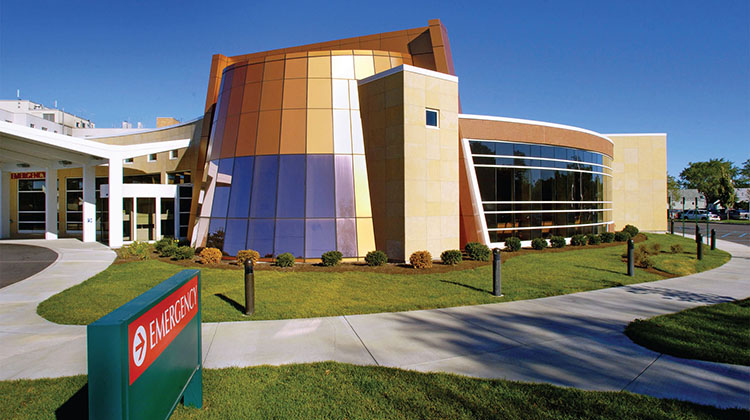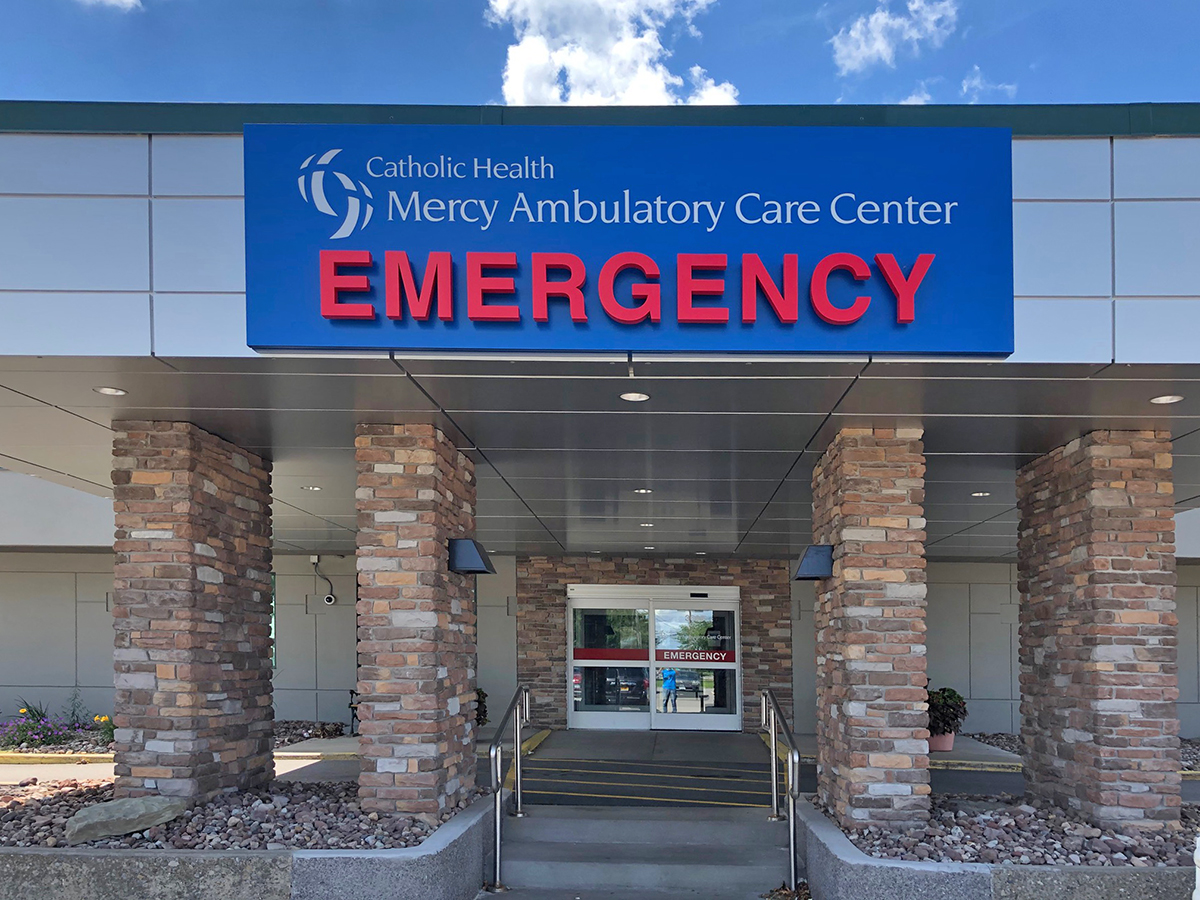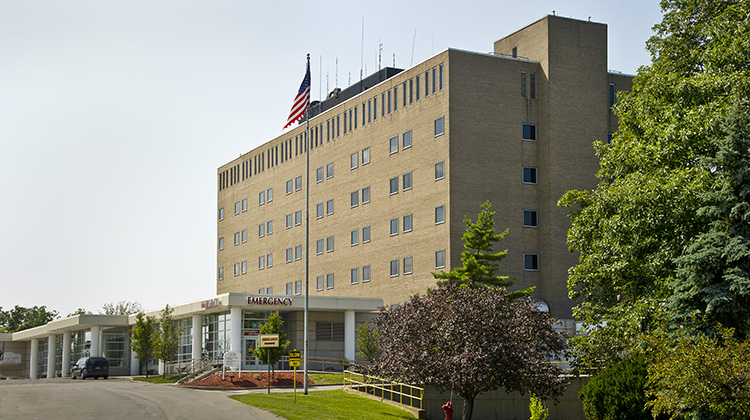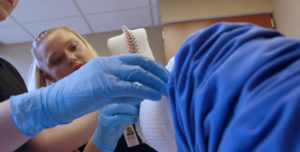Holiday Closings Notice
To view our list of holiday closures and adjusted hours, please visit our closings page.
If you or a loved one is living with a wound that will not heal, the specialists and nurses at our advanced wound healing centers can provide the comfort, technology, and treatments to put you on the path to recovery.
Our multi-specialty team – Western New York’s only full-time, American Board of Wound Medicine and Surgery certified wound care physicians – have extensive knowledge and experience in wound care management. Working collaboratively with your other doctors, the Catholic Health team is dedicated to providing you with a comprehensive and personalized plan for pain management and wound treatment. Additionally, our skilled staff listens to you to understand your goals and offers treatment based on your desires and needs.
Our wound care centers at Catholic Health work in partnership with Partners In Rehab, to ensure quality wound repair and recovery. We also coordinate with home care providers, if necessary, for long-term wound management.
Wounds that don't heal within four to six weeks may be considered chronic. If you have skin damage that doesn't seem to be improving, it's important to seek the professional opinion of a wound care specialist. Our highly-skilled team of physicians and specialist nurses are experts in their field, dedicated to best practice wound care and pain management. We use state-of-the-art technology and a patient-focused approach to treat non-healing wounds and ulcers.
Hyperbaric oxygen therapy stimulates the growth of new blood vessels, accelerating a patient’s healing process. This can be accomplished via sessions in a hyperbaric oxygen chamber, where patients breathe in a highly-concentrated form of oxygen. Increasing oxygen delivery to damaged tissues is a painless, noninvasive healing method.
» Learn MoreBest practice wound management recommends that non-healing wounds be kept moistened and protected to ensure their healing. Without the protection that an individualized dressing provides, chronic wounds are susceptible to repeat injury. Our team will personalize care for your injury based on condition of the wound, length of time that has passed, and any preexisting medical conditions.
» Learn MoreThe removal of dying or damaged tissue from a wound bed, or debridement, is an essential component of all wound care programs. Any dead skin or foreign matter left behind in a slow-to-heal wound can disrupt the growth of new tissues. Patients being treated may receive local anesthesia, to make them more comfortable.
» Learn MoreAt Catholic Health, our team of board certified specialists in wound care allows us to practice the best course of treatment for a variety of wounds and skin conditions. From surgical wounds and long-term effects of treatment, to a diagnosed medical condition, we provide care for:
Diabetic foot ulcers are unfortunately common side effects reported by patients living with diabetes. The term ulcer is used in a clinical setting to refer to non-healing wounds, like open sores, cuts, and scrapes. These types of skin damage are known to form in a patient’s lower extremities, including buttocks, legs, and anterior shins, as all are vulnerable to repeat injuries. Diabetes can disrupt adequate blood flow to these areas, which is especially important to the health and healing of open wounds.
In short, poor circulation in diabetes patients means that a simple blister or tiny cut may develop into a larger problem. It’s important to take charge of your diabetes to properly manage your condition.
Bedsores, known in clinical terms as pressure or decubitus ulcers, are damage to the skin and its tissues from prolonged pressure on a certain area. They are most commonly found on “bony” areas of the skin, such as heels, ankles, hips, and tailbone. Bedsores earned their name from being a common side effect in patients who are bed-ridden for medical reasons. Not seeking proper treatment when you recognize a bedsore can cause it to progress to a more serious stage of development. In the most severe cases, it turns into an open wound, with bones, joints, or tissues exposed.
Patients who are considered at-risk for developing bedsores either live with a condition that limits their ability to change positions, or lead a sedentary lifestyle, whether it be for medical reasons or not.
How are our bones able to get infected? Osteomyelitis, or a bone infection, is a fairly rare condition, but it poses a serious problem for patients when it occurs. Viable treatment options and symptoms will vary depending on the infection’s severity and progression. This can range from two weeks to a few months for symptoms to present themselves after the initial infection. Bone infection is a common complication of diabetic foot ulcers and infections.
The standard treatment response for bone infection would be tissue debridement and prescription of antibiotics. However, hyperbaric oxygen therapy is now used as a successful means of both improvement and intervention for patients with osteomyelitis, caused by both diabetic and tissue infection.
Catholic Health established our advanced wound healing program in 2009 – and it has continued to grow over the last decade. We are proud of what sets us apart – Western New York's only full-time providers who are board certified by the American Board of Wound Medicine and Surgery. Our facilities are nationally accredited, providing the highest standard of wound care. We practice evidence-based medicine, using medical science to achieve the most successful outcomes and patient satisfaction scores.

on St. Joseph Campus

at Mercy Ambulatory Care Center (MACC)

at Mount St. Mary’s Hospital

Radiation therapy is utilized by specializing physicians for its abilities to disrupt cell growth in the human body. One of its best-known...
» Read More
Total Contact Cast Application on a Diabetes Patient Neuropathy is a common condition, which causes the loss of sensation in the...
» Read More
Some wounds are deep enough that we can’t rely on nature alone to manage the healing process. In swoops science with hyperbaric...
» Read More